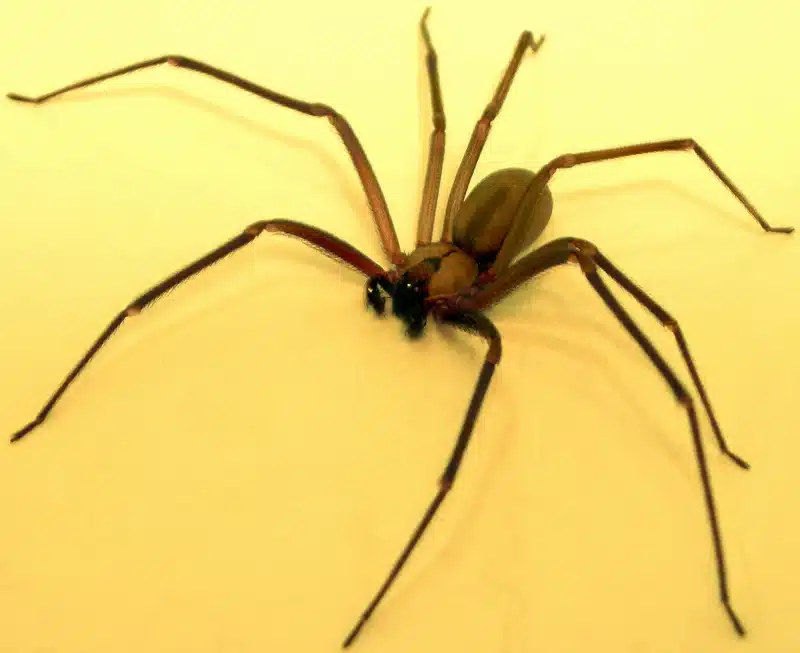When most homeowners spot a brown spider darting across their floor, the first thought is often “brown recluse!” But after treating hundreds of homes across northern Virginia, I’ve learned that what looks scary is usually just a harmless grass spider. The speed and brown coloring of grass spiders can trigger immediate alarm, but these common house visitors are actually beneficial predators that rarely pose any threat to humans.
Understanding the difference between grass spiders and brown recluses can save you from unnecessary worry and help you make better decisions about spider control in your home. Additionally, proper identification prevents the overuse of treatments when they’re not needed.
Why Grass Spider vs Brown Recluse Identification Matters
Misidentifying spiders leads to several problems that I see regularly in my work. Homeowners often panic when they spot grass spiders, thinking they have a dangerous brown recluse infestation. This fear can drive families to avoid certain areas of their home unnecessarily.
Medical misdiagnosis is another serious concern. When people believe they’ve been bitten by a brown recluse, they may receive inappropriate treatment for what’s actually a bacterial infection or other skin condition. Many “recluse bites” in our area turn out to be MRSA or other medical issues that require different care.
Furthermore, misidentification often leads to excessive pesticide use. Homeowners may spray harsh chemicals throughout their home when simple prevention methods would be more effective and environmentally responsible.
Grass Spider vs Brown Recluse: Geographic Distribution
Grass Spider Range in Virginia and Maryland
Grass spiders belong to the family Agelenidae and are extremely common throughout Virginia, Maryland, and DC. The species we see most often include Agelenopsis pennsylvanica and Agelenopsis naevia. These spiders thrive in our climate and are found in lawns, garden edges, wooded areas, and around home foundations.
In wooded communities like Mt. Vernon, grass spider populations can be especially high due to the moisture and tree coverage. They build their distinctive funnel webs in grass, low shrubs, and around the eaves of homes where they catch flying insects.
Brown Recluse: Rare Visitors to Our Region
Brown recluses (Loxosceles reclusa) have a very specific geographic range that barely touches our area. The core range includes the south-central United States, with only the extreme southwestern tip of Virginia falling within their natural territory.
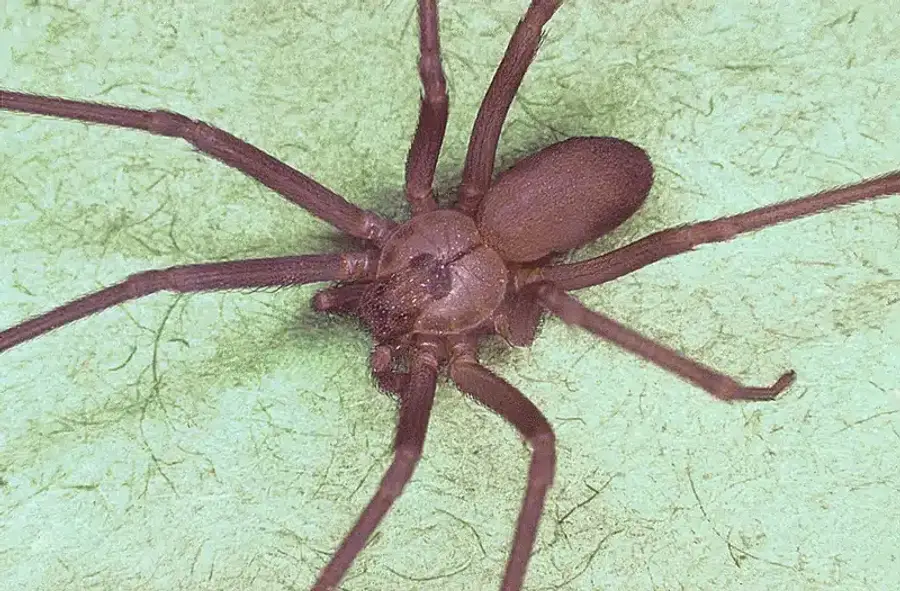
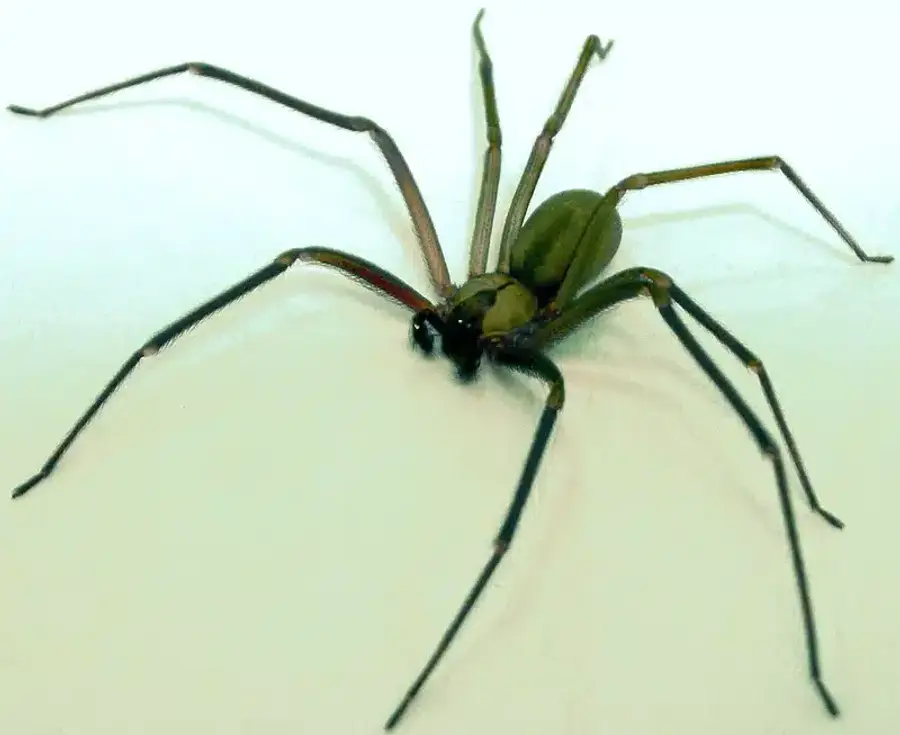
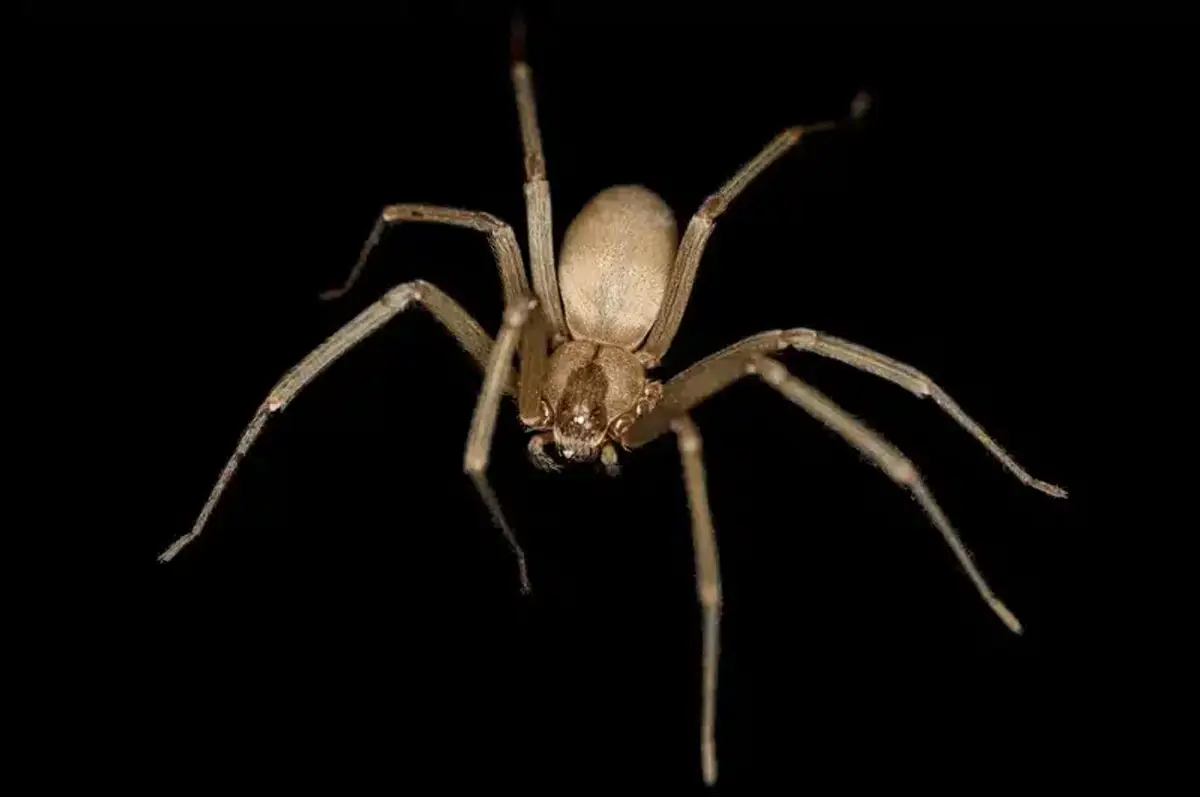
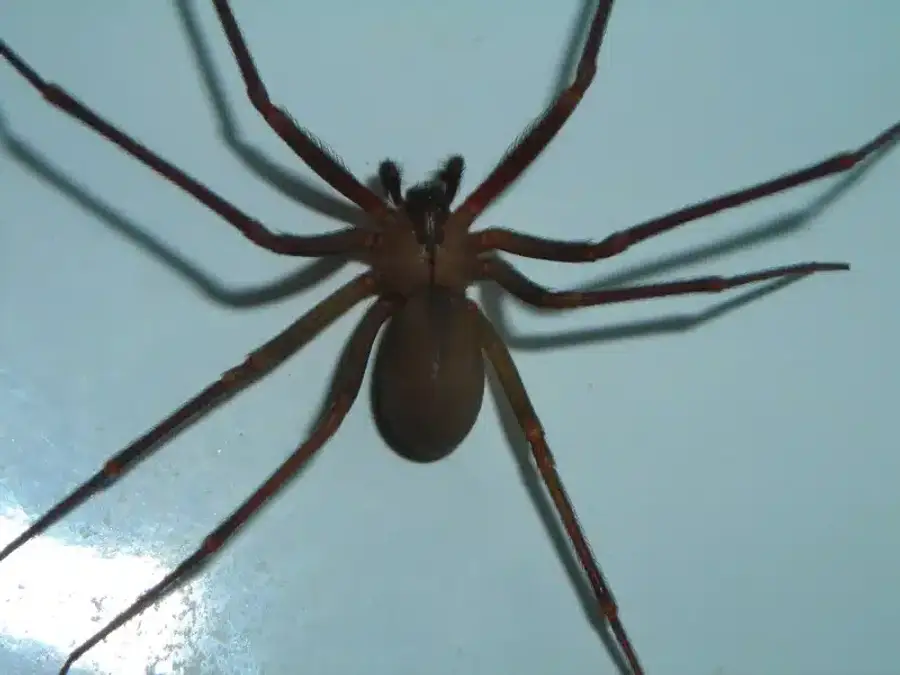
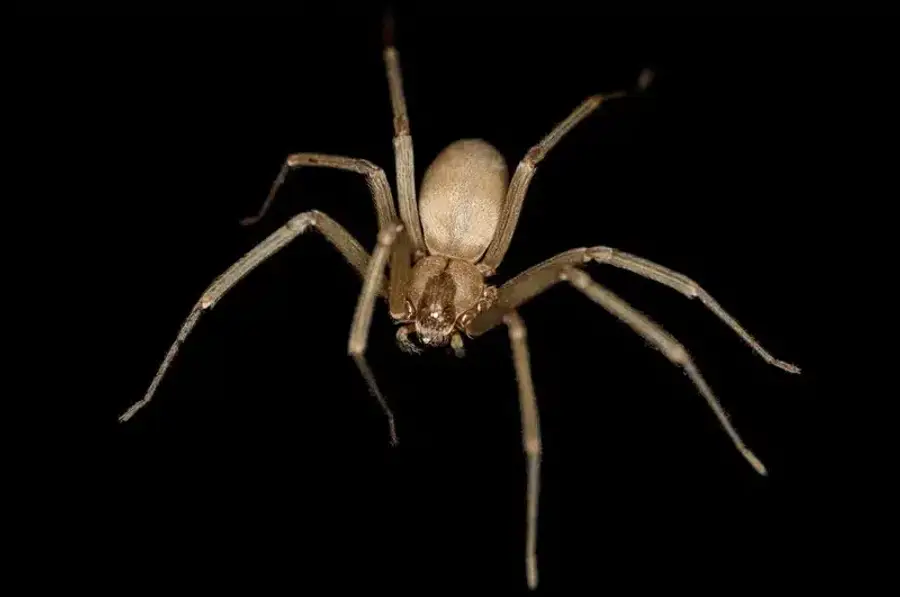
Maryland and most of Virginia have no established brown recluse populations. While an occasional specimen might arrive in shipping boxes or furniture, they rarely establish breeding populations in our climate. The University of Maryland Extension notes that brown recluses are “not found in Maryland” except for rare accidental introductions.
Grass Spider vs Brown Recluse: Habitat Differences
Where Grass Spiders Live
Grass spiders create flat sheet webs with funnel-shaped retreats where they wait for prey. You’ll typically find these webs in short grass, along foundation plantings, and in window wells. The webs become especially noticeable in late summer when morning dew makes them visible.
These spiders also move indoors occasionally, especially into basements and crawl spaces. Because they’re active hunters that rely on speed rather than sticky webs, they can cover ground quickly when searching for insects.
Brown Recluse Hiding Spots
Brown recluses prefer undisturbed, dry locations where they can hide during the day. They seek out attics, closets, wall voids, and storage areas filled with cardboard boxes. Outdoors, they hide under logs, rocks, and woodpiles.
Unlike grass spiders, brown recluses don’t build visible capture webs. They’re secretive hunters that emerge at night to search for dead insects and other small prey. This secretive nature makes them much harder to spot than web-building species.
Grass Spider vs Brown Recluse: Physical Identification
Eye Patterns: The Most Reliable Difference
The easiest way to distinguish between these two spiders is by examining their eyes. Grass spiders have 8 eyes arranged in three rows (4-2-2 pattern), while brown recluses have only 6 eyes arranged in three pairs (2-2-2 semicircle pattern).
This eye pattern difference is diagnostic and doesn’t require you to handle the spider. A close-up photo or magnifying glass can help you count the eyes and arrange them properly.
Body Markings and Spinnerets
Grass spiders display two dark longitudinal stripes running down their cephalothorax (front body section). Their abdomens often show mottled patterns, and they have notably long posterior spinnerets that extend visibly from their rear end.
Brown recluses have uniform tan to brown coloring with no banding on their legs. The famous “violin” or “fiddle” marking appears on their carapace, with the neck of the violin pointing toward the rear of the spider. Their spinnerets are short and not easily visible from above.
Grass Spider vs Brown Recluse: Behavior and Life Cycle
Grass Spider Activity Patterns
Grass spiders spend daylight hours resting in their funnel retreats and become active at night to hunt on their webs. They complete their life cycle in one year, with females producing egg sacs in late summer that overwinter until spring.
These spiders are incredibly fast runners, which often startles homeowners. When threatened, they can dart across surfaces at surprising speeds, but they’re not aggressive toward humans.
Brown Recluse Habits
Brown recluses are nocturnal hunters that can survive for months without food. This resilience helps them persist in indoor environments where prey might be scarce. Females produce multiple egg sacs between May and July, with spiderlings dispersing by crawling rather than ballooning like many other spider species.
Their ability to go long periods without food means that finding one spider doesn’t necessarily indicate an active infestation. However, established populations can build up slowly over time in suitable hiding spots.
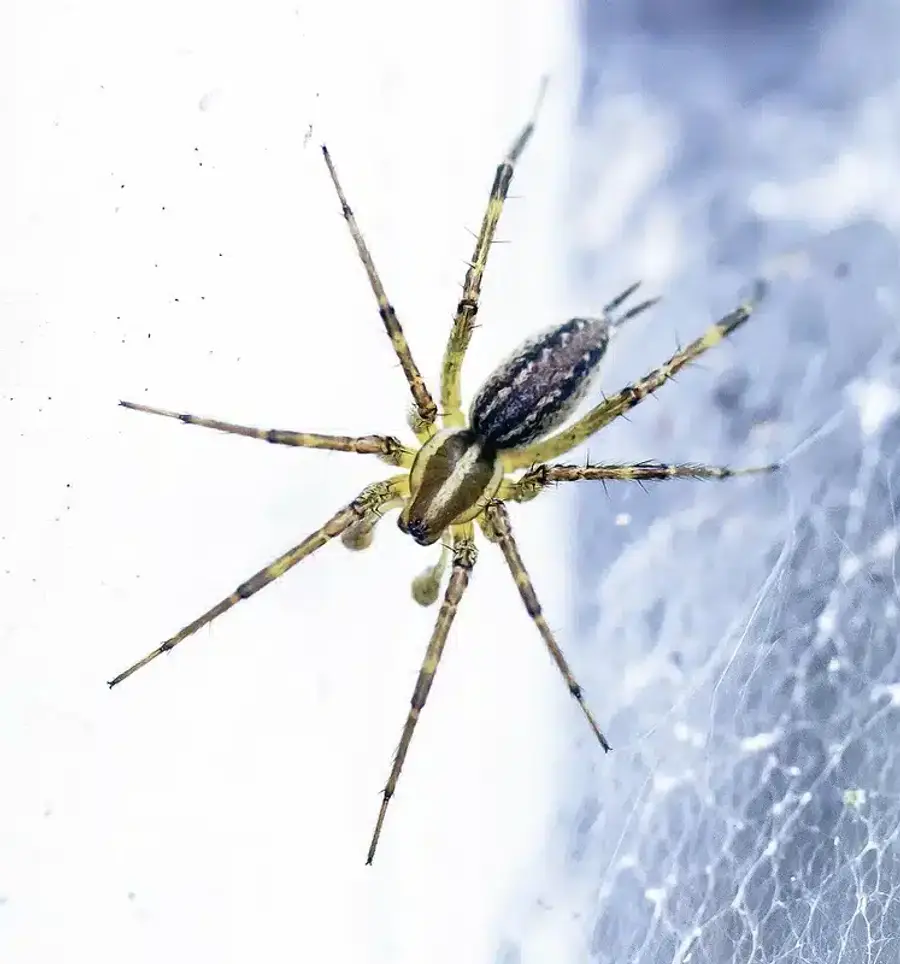
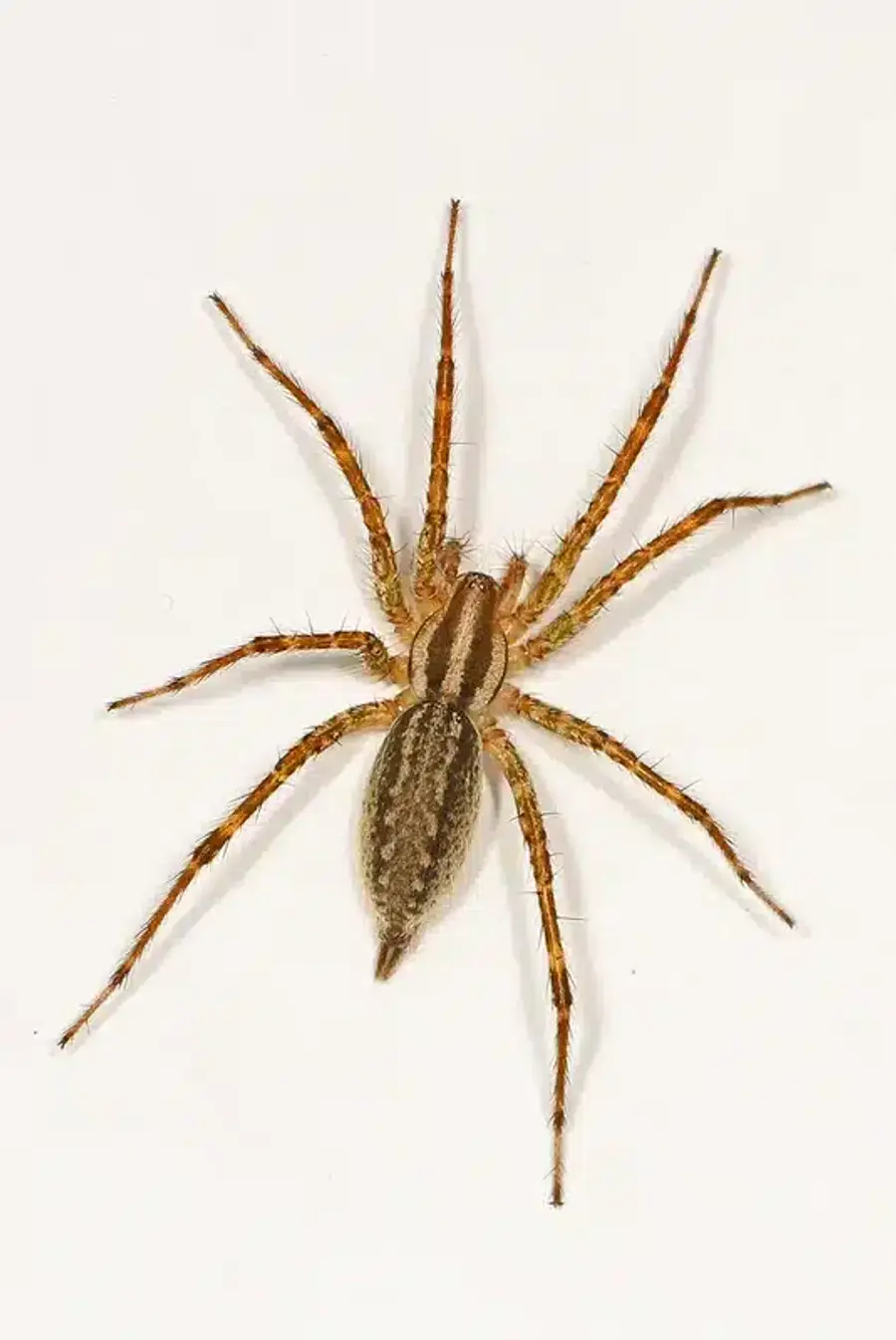
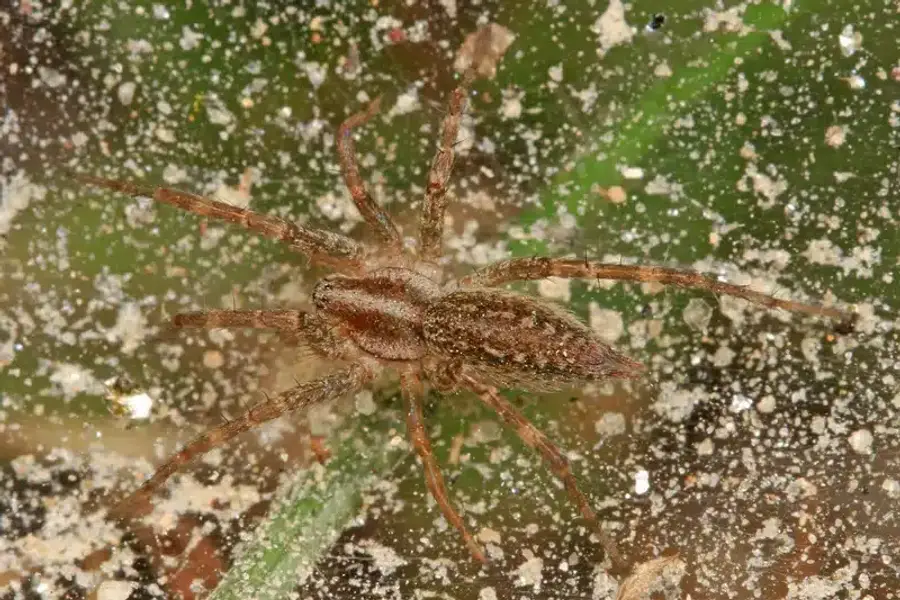

Grass Spider vs Brown Recluse: Medical Significance
Grass Spider Bites
Grass spiders are essentially harmless to humans. Their fangs are small and rarely penetrate human skin effectively. Even when bites do occur, they typically cause only minor, localized irritation similar to a mosquito bite.
The medical literature contains only two documented cases of medically significant grass spider bites, both involving Agelenopsis aperta in California. These cases resulted in mild to moderate symptoms, making serious grass spider envenomation extremely rare.
Brown Recluse Venom Effects
Brown recluse venom contains cytotoxic compounds that can cause tissue death in some cases. According to University of Kentucky entomologists, approximately 10% of verified brown recluse bites develop necrotic skin lesions.
Systemic effects are possible but uncommon. Because many skin conditions get misdiagnosed as brown recluse bites in areas where these spiders don’t naturally occur, medical evaluation should focus on ruling out bacterial infections like MRSA first.
If you suspect a brown recluse bite, seek medical attention promptly, especially if you develop progressive ulceration or systemic symptoms like fever or joint pain.
Grass Spider vs Brown Recluse: Common Misconceptions
Why Misidentification Happens
The rapid movement and brown coloring of grass spiders triggers fear responses in many people. When you see a brown spider moving quickly across your floor, the natural reaction is to assume it’s dangerous. Media coverage and internet photos often exaggerate brown recluse populations outside their natural range.
Clinical over-diagnosis contributes to the problem. Many skin conditions get labeled as “brown recluse bites” even in areas where these spiders don’t exist. This creates a false impression that brown recluses are common throughout the country.
Reality Check for Virginia and Maryland
The likelihood of encountering a brown recluse in most of Virginia, Maryland, or DC is extremely low. What homeowners typically find are grass spiders, wolf spiders, or other harmless species that happen to be brown in color.
When people do find spiders indoors, they’re usually beneficial predators that help control flying insects, mosquitoes, and other pests. Learning to recognize these helpful species can reduce unnecessary fear and pesticide use.
Grass Spider vs Brown Recluse: Quick Reference Guide
| Feature | Grass Spider | Brown Recluse |
|---|---|---|
| Eyes | 8 eyes (4-2-2 rows) | 6 eyes (2-2-2 pairs) |
| Web | Flat sheet with funnel | No capture web |
| Markings | Dark stripes on cephalothorax | Violin marking on carapace |
| Spinnerets | Long, visible | Short, hidden |
| Habitat | Garden webs, eaves | Hidden voids, storage |
| Range in VA/MD | Very common | Extremely rare |
| Medical risk | Essentially none | Low but present |
Prevention and Treatment Options
Basic Spider Prevention
Most spider problems respond well to simple prevention measures. Regularly vacuum webs from eaves, corners, and window sills. I often use a tool called a Webster to remove webs that are out of reach, then follow up with treatments as needed.
Keep vegetation trimmed away from your foundation and reduce exterior lighting that attracts flying insects. Spiders follow their food sources, so controlling the insects they eat naturally reduces spider populations.
Additionally, seal gaps around windows, doors, and utility penetrations. Many spiders enter homes through small cracks that are easy to overlook during routine maintenance.
Professional Spider Control
For persistent spider issues, quarterly perimeter treatments work well for most species. We use non-repellent products that create a barrier around your home without driving spiders deeper into hiding spots.
The approach focuses on treating areas where spiders are actually active rather than blanket spraying. This targeted method is more effective and uses fewer chemicals overall. For specific spider problems, our registered technicians can identify the species and recommend appropriate control measures.
If you’re dealing with webbing spiders around your eaves, we can remove current webs and establish a treatment schedule that keeps them from rebuilding. For questions about getting rid of spiders in your house, our team can explain which methods work best for your specific situation.
Understanding the difference between grass spiders and brown recluses helps you respond appropriately to spider encounters in your home. Most spiders in our area are beneficial predators that help control other pests, and simple prevention measures can keep populations manageable without extensive treatments.
If you’re concerned about spider activity in your home or want to establish a prevention program, call us at 703-683-2000 or email info@bettertermite.com for a consultation.
Frequently Asked Questions
What is the main difference between a grass spider and a brown recluse?
+
The most reliable difference is the eye pattern. Grass spiders have 8 eyes arranged in three rows, while brown recluses have only 6 eyes arranged in three pairs. Additionally, grass spiders build visible funnel webs while brown recluses don't create capture webs.
Are grass spiders dangerous to humans?
+
Grass spiders are essentially harmless to humans. Their fangs rarely penetrate human skin, and even when bites occur, they cause only minor irritation. Medical literature contains only two documented cases of significant grass spider bites, both with mild symptoms.
How can I identify a brown recluse spider?
+
Brown recluses have 6 eyes in three pairs, uniform tan-brown coloring, and a violin-shaped marking on their back. They don't build webs and prefer hiding in undisturbed areas like closets, attics, and storage boxes. However, they're extremely rare in Virginia and Maryland.
Do grass spiders bite, and what are the symptoms?
+
Grass spider bites are rare because their fangs don't easily penetrate human skin. If a bite occurs, expect minor redness and irritation similar to a mosquito bite. No special treatment is needed beyond basic wound care.
Where am I likely to find grass spiders vs brown recluse spiders in my home?
+
Grass spiders build funnel webs in grass, around foundations, and in eaves. They may enter basements or crawl spaces. Brown recluses prefer hidden, undisturbed areas like wall voids, closets, and storage areas, but they're extremely uncommon in our region.
How should I treat a spider bite from a grass spider vs a brown recluse?
+
Grass spider bites need only basic wound care like cleaning and a cold compress. Suspected brown recluse bites require medical evaluation, especially if you develop progressive ulceration, systemic symptoms, or if the wound doesn't heal normally.
Is it common to find brown recluse spiders in Virginia?
+
Brown recluses are extremely rare in Virginia, with only the far southwestern tip of the state within their natural range. Maryland and most of Virginia have no established populations. What people often mistake for brown recluses are usually grass spiders or other harmless species.
When should I call a professional for spider removal?
+
Consider professional help if you're finding multiple spiders regularly, if webs keep rebuilding quickly around your home, or if you need help with proper identification. For general [spider control](/pests/spiders/), tri-annual treatments (three times per year) can establish long-term control without overusing pesticides.
With five years of hands-on experience in the pest control industry, George Schulz is a registered technician with the Virginia Pest Management Association and a proud third-generation professional in a family business that's been protecting homes for over 57 years. He manages and trains a team of service pros while also leading internal research efforts—recently spearheading a deep-dive review of thousands of documents on pest control materials to hand-pick the most kid and pet friendly, most effective solutions tailored specifically for homes in the DC metro area.
